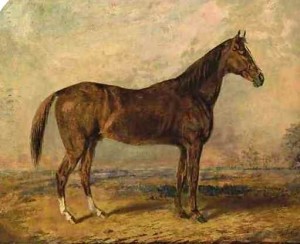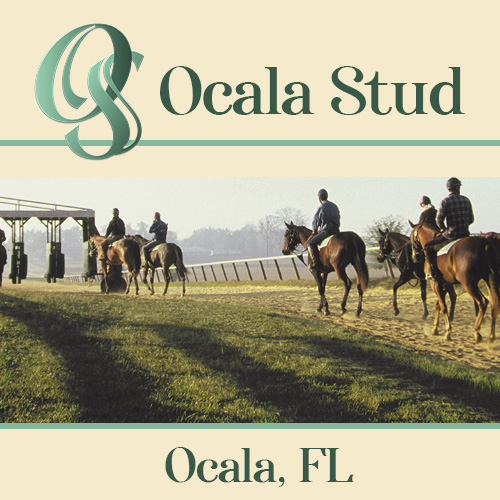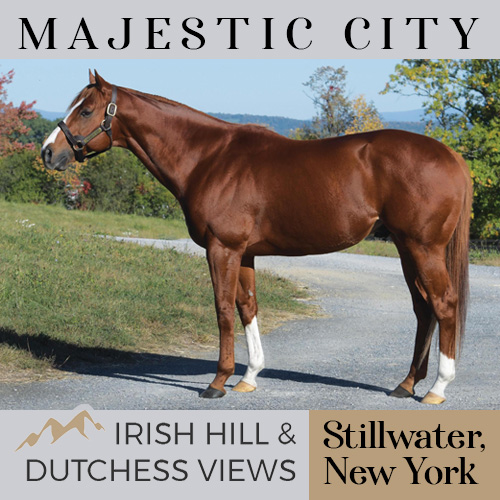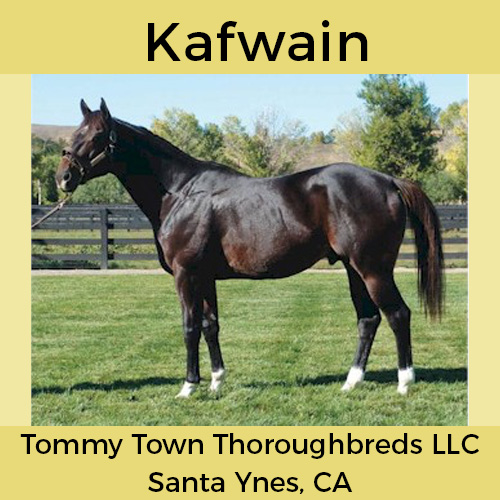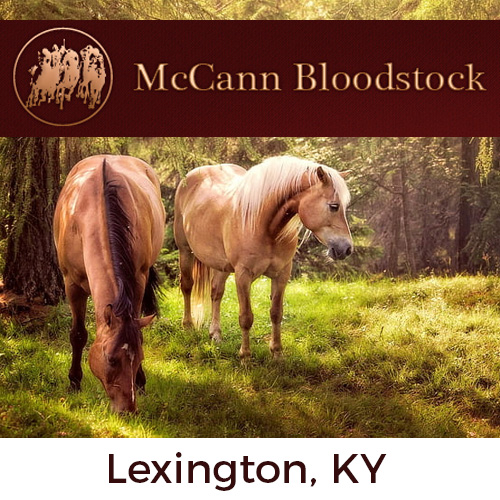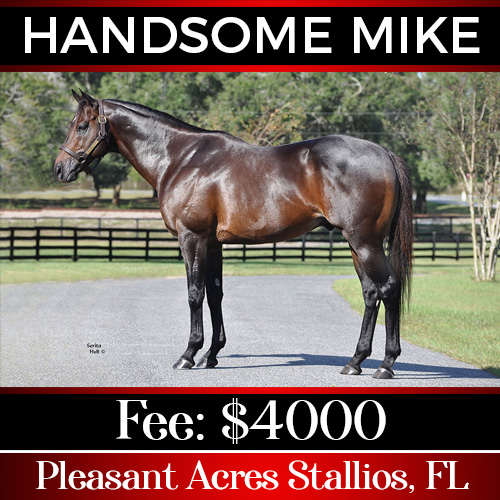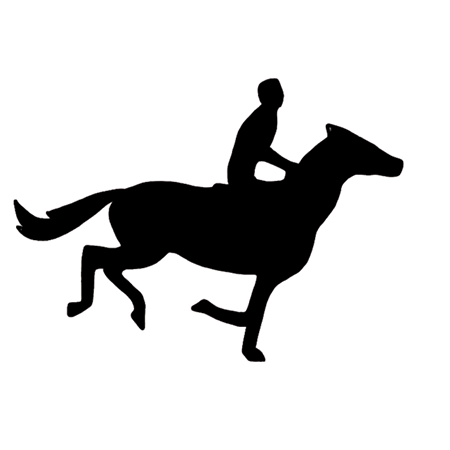Thoroughbred People's Equine Legends Series: Boston
A grandson of Sir Archy, who is considered to be the first important stallion bred in the United States, Boston or “Old White Nose” as he eventually was referenced to, was quite famous in his own right. He was the first important American racehorse and his performances both on the track and in the breeding shed were legendary. A son of one of Sir Archy’s best sons Timoleon and an unnamed Ball’s Floriel mare, Boston arrived in the world in 1833 at John Wickham’s plantation in Henrico County, Virginia. The colt was a flaming chestnut with a flashy white blaze that was inbred 3 x 3 to Diomed, who was the first horse to capture the Epsom Derby.
When the colt was two, Wickham, who was an attorney, like many of his era, took part in a very high stakes hand of cards with Richmond, Virginia, resident Nathaniel Rives. Unfortunately for Wickham, lady luck was not smiling down upon him. After racking up an $800 debt to Rives, Wickham decided to transfer the progeny of Timoleon to Rives to satisfy his debt. Rives then placed the colt, now named Boston in honor of that prodigious card game, into training with John Belcher, but Boston had some other ideas about what his future would hold for he had a temperament as fiery as his chestnut coat.
Boston was so unruly and unpredictable, Colonel L White, a reputable breeder in the region, commented rather than Belcher breaking him to saddle the colt should be “either castrated or shot, preferably the latter.” Belcher, who was the conditioner for the “Napoleon of the Turf” Colonel William R. Johnson, did not follow White’s recommendations, but definitely had a tough task on his hands. It appears Boston developed the very nasty habit of dropping and rolling to remove his rider from his back. When none of Belcher’s expertise would yield results, he and several of his stable hands took matters into their hands. When Boston was on the ground, they would sit on his head and thrash him with sticks. After literally beating this vice out of him, Boston never employed this specific tactic again. He remained, however, an incredibly tough horse to contend with.
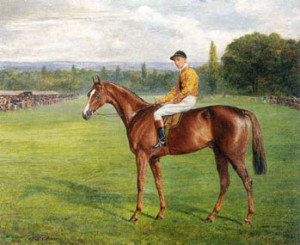 On April 20, 1836, the 3-year-old made his first racing appearance. True to his obstinate nature, Boston was well in front and it was quite apparent he would be the victor, until he decided he did not feel like running anymore. In fact, he came to a complete stop and would not move a muscle until he was forced to. Over the summer months Belcher tried in vain to teach Boston to mind his manners. When he did return to the races in the fall, however, it was with a new trainer in Arthur Taylor. He captured both of his contests at the Petersburg and Hanover Court House courses. This was the beginning of a 17 race win streak which lasted until Boston was six years old.
On April 20, 1836, the 3-year-old made his first racing appearance. True to his obstinate nature, Boston was well in front and it was quite apparent he would be the victor, until he decided he did not feel like running anymore. In fact, he came to a complete stop and would not move a muscle until he was forced to. Over the summer months Belcher tried in vain to teach Boston to mind his manners. When he did return to the races in the fall, however, it was with a new trainer in Arthur Taylor. He captured both of his contests at the Petersburg and Hanover Court House courses. This was the beginning of a 17 race win streak which lasted until Boston was six years old.
At age four, Boston became the property of Colonel Johnson and was returned to Belcher’s care. He competed on four occasions, with the great jockey Cornelius, a former slave, and won them all. The total purse money he collected for the season was $2,000. The following year he dominated “every good horse race north of the Potomac” in his eleven races and amassed $8,900. His first start was Union Course on Long Island and he then traveled to Hobokken, New Jersey, to the Beacon Course. His next stop was at Camden, then a return to Union. Petersburg was next on the agenda followed by Virginia, Baltimore, Camden, Long Island and Hoboken. At Union Course he traveled three mile heats in record time and also produced the second best time for four miles.
When he was six, James Long, who lived in Washington, D.C., purchased a half interest in the horse. He competed on nine occasions and won eight of them. His defeat, only the second of his career came in April at Petersburg in one of his first starts of the year. It was reported Boston was “off balance.” He righted the ship in his next start, however, as he established a new standard for 3 miles at Broad Rock, Virginia. This was when legendary white rider Gilpatrick took over the stallion’s reins. At age seven, Boston annexed all seven of his starts.
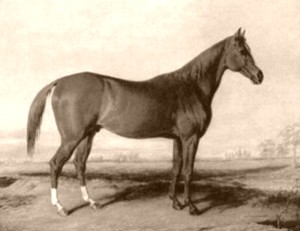 By the time Boston was eight, many in the industry had grown weary of him beating every other horse. Johnson had been paid previously to keep Boston’s name out of the entry box and now the jockey clubs at locations such as Union Course and Petersburg requested the stallion be raced elsewhere. They suggested maybe he should race in the South. They even considered placing the phrase “Bar Boston” in their race conditions. At this juncture, Johnson decided to stand the horse and Boston spent the summer of 1841 in the breeding shed. He was bred to 42 mares with each breeding possessing the price tag of $100.
By the time Boston was eight, many in the industry had grown weary of him beating every other horse. Johnson had been paid previously to keep Boston’s name out of the entry box and now the jockey clubs at locations such as Union Course and Petersburg requested the stallion be raced elsewhere. They suggested maybe he should race in the South. They even considered placing the phrase “Bar Boston” in their race conditions. At this juncture, Johnson decided to stand the horse and Boston spent the summer of 1841 in the breeding shed. He was bred to 42 mares with each breeding possessing the price tag of $100.
That fall Johnson laid down the gauntlet for his horse. He claimed Boston would compete against any two horses in four mile heats with the challengers to alternate heats. The price of entry, however, was $45,000. That was a princely sum to pay for most and also the fear of Boston’s prowess was so real, no one really wanted to race against him. Boston did return to the races with a triumph on September 30, 1841 and collected three more victories over the course of the next 20 days. It was when he met Fashion, a 3-year-old filly by Trustee, on October 28, 1841, the stallion was handed his third career defeat. Before Boston was even back in the barn, Johnson challenged the filly’s connections to a match race the following spring. It was accepted and eagerly awaited as the last national turf event of that magnitude had been between American Eclipse and Sir Henry in 1823. In fact, New York City’s railway system could not accommodate the crowds of spectators traveling to the race and there were riots in the street.
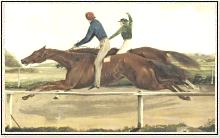 For the match race, the 9-year-old stallion carried 14 pounds more than the much younger filly. Fashion did win the contest in a new record time, but Boston sustained a cut on his hip that was fairly severe when he hit the fence on one of the turns. The stallion competed on four more occasions that year and won three of them, but returned to the track only one time at age 10. After winning this race, Boston was retired to the breeding shed in Hanover County, Virginia, in 1843. Upon the completion of his career, the stallion had a record of 40 wins from 45 starts and $51,700 in purse money. The fact that Boston performed at such an elite level for nearly seven years over numerous courses and in three and four mile heats illustrates what a tremendous individual he truly was.
For the match race, the 9-year-old stallion carried 14 pounds more than the much younger filly. Fashion did win the contest in a new record time, but Boston sustained a cut on his hip that was fairly severe when he hit the fence on one of the turns. The stallion competed on four more occasions that year and won three of them, but returned to the track only one time at age 10. After winning this race, Boston was retired to the breeding shed in Hanover County, Virginia, in 1843. Upon the completion of his career, the stallion had a record of 40 wins from 45 starts and $51,700 in purse money. The fact that Boston performed at such an elite level for nearly seven years over numerous courses and in three and four mile heats illustrates what a tremendous individual he truly was.
Boston was relocated to Washington, D.C. in 1946 and in 1847 took up residence at Colonel Edward Blackburn’s farm, which is presently the Hurstland/Nuckols property in Midway, Kentucky. As Boston had not been bred to many high quality mares early in his stud career, it was now his chance to shine. That is not to say the stallion had not already produced some quality horses. For example, Ringgold, born in 1842, out of Flirilla Jr. by Sir Archy, was in his first crop and was a very nice horse on the track. Ringgold also sired Tipperary who in turn sired Calvin, who was a Belmont Stakes victor, as well as Sallie Watson and Ringmaster.
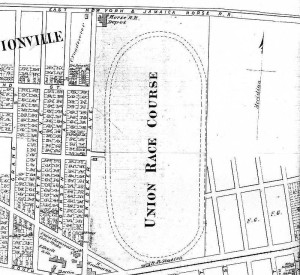 His 1846 crop yielded Commodore out of Rosalie Somers by Sir Charles and Red Eye out of Lucy Long by Priam. Commodore was a potent stallion as he was responsible for Lady Hardaway and Nellie Gray. Other top horses produced by Boston were Arrow, Wade Hampton, Arlington, Zero and Cracker. He led the sire lists in 1851, 1852 and 1853. Glencoe brought that streak to an end in 1854, but Boston was second.
His 1846 crop yielded Commodore out of Rosalie Somers by Sir Charles and Red Eye out of Lucy Long by Priam. Commodore was a potent stallion as he was responsible for Lady Hardaway and Nellie Gray. Other top horses produced by Boston were Arrow, Wade Hampton, Arlington, Zero and Cracker. He led the sire lists in 1851, 1852 and 1853. Glencoe brought that streak to an end in 1854, but Boston was second.
As Boston aged he became blind and by 1849 all the marvelous feats from the racetrack took its toll on the stallion’s body. By this time he struggled to rise and was actually kept in a hammock. Every morning stable hands would aid in getting him to his feet and then massage his legs so he could stand. Boston passed away in his stall on January 31, 1850. His two best colts, Lecomte and Lexington would be born in the spring of 1851. Although Lecomte suffered an early death and only had one crop to race, he did get several winners and Lexington would go on to become a foundation sire for the Thoroughbred breed. Many horses today can trace their lineage back to Lexington.
Boston was not only a sire of sires. He produced quality fillies. For instance, Nina (1849) was an excellent race mare and gave birth to Planet as well as Belmont Stakes winner Algerine. Her filly Ecliptic was also an outstanding broodmare. Madeline (1849) did not excel on the turf, but was the dam of Aristides Welch’s Maggie B.B., who produced Kentucky Derby winner and top sire Iroquois, Belmont Stakes winner Panique and Preakness winner Harold as well as Jaconet, who was the dam champion and top sire Sir Dixon.
In an interesting aside, Boston left his mark not only on the Thoroughbred breed, but also on the Standardbred side as he sired trotters. His daughter Sally Russell (1850) was the granddam of the terrific trotter Maud S. His granddaughter through Lexington, Twilight, was the granddam of swift Jay-Eye-See and appears in many harness pedigrees such as that of champion Spencer Scott. The great Greyhound can even trace his family heritage back to a daughter of Boston in Jr. (1850).
Although he was not considered especially handsome, the chestnut stallion did bear white on his feet in addition to the great blaze on his face and was considered to have a certain presence. He stood a shade over 15 hands, but was well muscled and conformed with a 26 foot stride. Despite his obstinate temperament or maybe because of it, Boston’s durability, toughness and brilliance on the racetrack are impossible to deny. Neither is his impact on American Thoroughbred racing.
Penrod Lumber And Fence Company
http://www.penrodfence.com/
